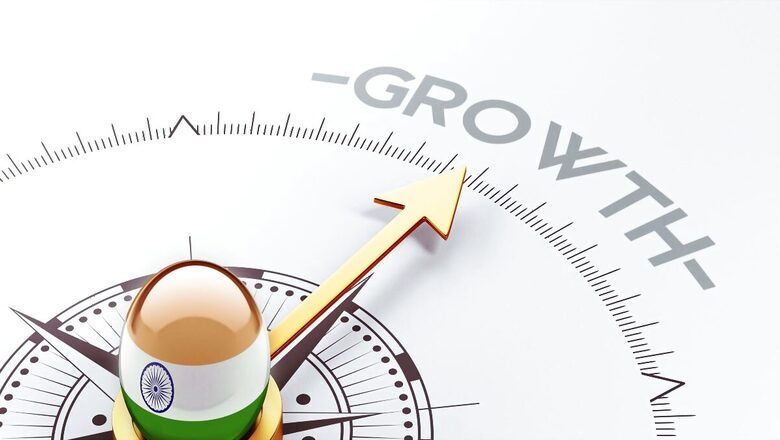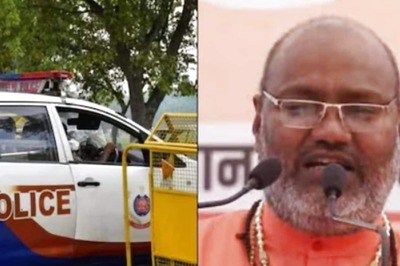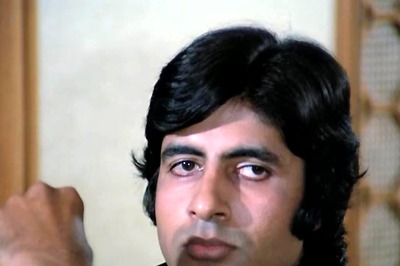
views
The country was startled in a good way by the announcement of 8.4 per cent GDP growth for the third quarter of fiscal 2024. This was till December 2023, instead of the earlier estimated 6.5 per cent for the same quarter. This, of course, is in the so-called ‘real economy’ that is benefiting from multiple structural changes over the last decade and the lack of any big-ticket corruption. The Indian stock market, which has recently overtaken that of Hong Kong with a little over $4 trillion in market cap, reacted by reaching fresh all-time highs on the Sensex and Nifty. But now, this cannot be labelled as mere exuberance, irrational or otherwise, froth, or a bubble, as in the past.
The number of Indian stocks that have tripled in value terms over the last decade and are worth $1 billion or more are 183 in number, making it number one for this feat. The next two positions have the US with 157 such companies and China with just 79. The US, of course, has a $62 trillion worth of stock market and its biggest companies have a market cap bigger than the entire Indian economy.
But in its place, the Indian debt and bond market has been seeing significant foreign investor inflows ever since it was included in the Morgan Stanley debt fund global indices in New York. Morgan Stanley has issued bullish statements on the Indian stock market and has upgraded India to ‘overweight’ rating. Likewise, Jefferies and a number of other international investment houses. A number of international allocation indices have halved the percentage weightage for China, based on its economic decline and geopolitical tensions it has engendered, and doubled those for India. This should see sizeable investment coming in from abroad, despite so-called high valuations in the small-cap and mid-cap space.
In addition, the Domestic Institutional Investors (DII) and the mutual fund industry has been pouring resources into the Indian stock market, keeping the market buoyant by buying on dips. The Systematic Investment Programmes (SIP) into mutual funds have seen an influx of lakhs of retail investors and sizeable collective funds. The Foreign Institutional Investors (FII) who controlled 60 per cent of the Indian stock market activity in 2016, now account for 40 per cent of the larger market-cap, and cannot take the market up or down at will anymore.
India is rapidly turning into an ‘asset class’ on its own in the opinion of investment gurus, fuelled by growth figures of 15 per cent per annum or more in a large number of private sector and now public sector companies too.
It is little wonder that John Thomas Chambers, the former CEO of Cisco Systems, one of the greatest successes of the internet era, thinks that India will have the largest economy in the world by 2047. Chambers expects an accelerated partnership between the US and India to make this happen, along with taking artificial intelligence (AI) into the mainstream. Chambers also thinks Prime Minister Narendra Modi is the greatest leader in the world.
The year FY24 is now estimated to end with 7.5 per cent GDP growth. This augurs well for the period after the general elections 2024, which the NDA is expected to win with a majority, because more bold economic reforms can be effected soon thereafter. This continuity and expected stability of governance is another highly favourable factor for the increased thrust towards manufacturing including those of the high-value electronic chips. Three ventures are in the works, and several more are likely.
The rapid development of infrastructure has already reduced bottlenecks and a proportion of the logistical costs from a high of 14 per cent towards a low of 8 per cent. The China Plus One initiative has gained ground with renowned manufacturers like Apple.
India’s thrust on Make in India in defence manufacturing is bearing tangible fruit in a number of areas such as fighter jets, light tanks, armoured carriers, bailey bridges, radar, missiles, helicopters, military transport aircraft, bulletproof vests, howitzers, rifles, ammunition and so on.
Agriculture is in need of substantial reform but still has created a food surplus along with substantial exports of rice and other commodities to West Asia and beyond. Exports in general, from manufactured and value-added goods to services, have vastly increased and are on a sharp upward trajectory.
Arvind Panagariya, the University of Columbia professor from New York, who was Vice Chairman of the NITI Aayog earlier, and has recently taken on the mantle of Chairman of the Finance Commission (that decides which state gets how much out of central collections and resources), and Vice Chancellor of the rebuilt Nalanda University, is ahead of the curve. While most analysts expect about 7 per cent growth in GDP for several years going forward, Panagariya sees a potential to achieve 10 per cent GDP growth per annum year-on-year. This is the coveted double-digit growth that took China to number two in the world, albeit over a much longer period, based not on a roaring domestic economy, despite a formidable manufacturing capacity, but exports to the West.
Eminent economists Surjit Bhalla and Arvind Virmani are calling India a middle-income economy now. India, at just about $4 trillion in GDP, is already poised to become the third largest by 2030, just six years away. This, particularly with Germany, Japan, as well as several other European economies, slipping into recession.
India’s indirect tax, the Goods and Services Tax (GST) collections, a barometer of a growing legitimate economy, also rose 12.5 per cent year-on-year to 1.68 lakh crore in February 2024 for transactions conducted in January. The average monthly gross collection for FY24 is steady at Rs 1.67 lakh crore. As of February 2024, the total gross GST collection stood at Rs 18.40 lakh crore, 11.7 per cent higher than the corresponding period in 2023. Going forward, the GST collection of 1.7 lakh crore per month is likely to become the minimum if it doesn’t go higher. This increase in taxes is likely to cushion, if not obviate, any impact on the fiscal deficit from higher nominal growth rates as they come. Direct taxes similarly are seeing a noticeable increase too.
As of January 2024, the government has clocked up only 63.6 per cent of its fiscal deficit target or 11.02 lakh crore in absolute terms. This leaves enough elbow room for the remaining two months of the fiscal year 2024. GDP at current prices in FY24 is estimated to reach Rs 293.90 lakh crore, up from Rs 269.50 lakh crore in FY23. It is therefore clear that the slow-down in the economy occasioned by Covid is now over.
As for those, like the Communists and sections of the Opposition, who like to think that the rich are getting richer and the poor are getting poorer, there was other news. The percentage of people in absolute poverty amongst India’s 1.4 billion plus people declined to just 5 per cent of the population. We are now within striking distance of abolishing absolute poverty. And the growth is becoming more and more inclusive of all sections of the population. At the prevailing growth rates, let alone the double-digit ones, the per capita income will also rise into multiples of what it is today and become more evenly spread.
Another news item stated that rural consumption figures have nearly caught up to urban ones. People there are now spending much more on non-essentials, lifestyle and so on. This is not surprising because of rising aspirations. The impact of not only greater disposable income, but also the reach of satellite TV, social media on the internet, and the fact that over half of the billion-plus smartphones are owned by citizens from the rural areas and the tier two/three, tier four towns now.
Barring impactful Black Swan events in a volatile geopolitical scenario, India is poised to make its Amrit Kaal period to its centenary in 2047 a truly transformative one.
The writer is a Delhi-based political commentator. Views expressed in the above piece are personal and solely that of the author. They do not necessarily reflect News18’s views.



















Comments
0 comment